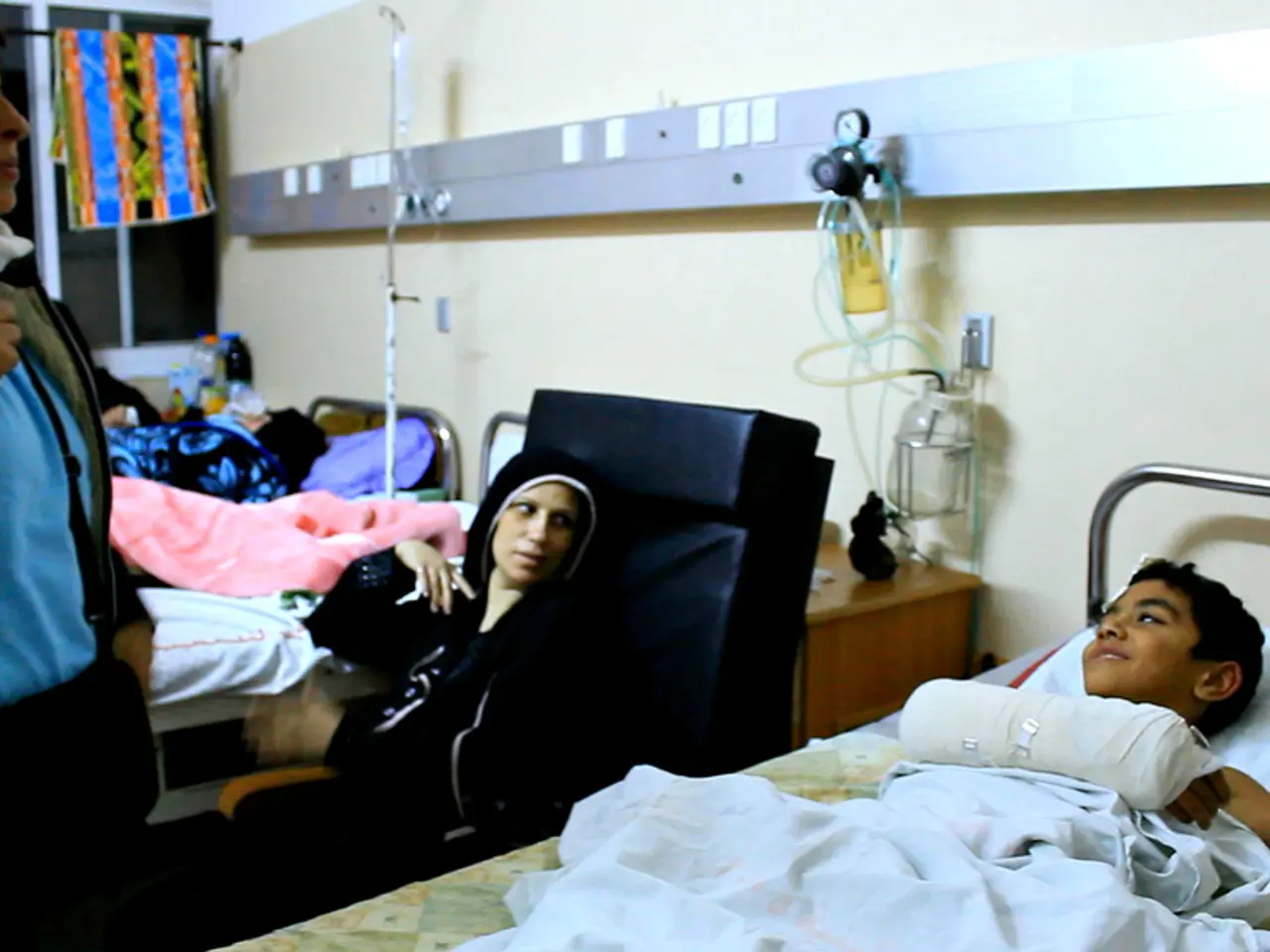Treatment approach for pulmonary embolism: Breaking down the medical strategy
In the management of pulmonary embolism, a carefully designed nursing care plan plays a crucial role in ensuring the best possible outcomes for patients. Here's an overview of the five key steps involved in creating such a plan.
- Assessment: The process begins with a thorough evaluation of the patient, including symptoms like chest pain and shortness of breath, as well as objective signs such as respiratory rate, blood pressure, and oxygen saturation. Diagnostic tools like CT scans, pulmonary angiography, or ventilation-perfusion scans may be used to confirm the diagnosis.
- Development of the Care Plan: Based on the assessment, clear short-term and long-term goals are established, focusing on symptom management, preventing complications, and addressing risk factors such as deep vein thrombosis (DVT). Measurable nursing interventions are planned, including monitoring respiratory status, administering prescribed anticoagulants, oxygen therapy, and pain management.
- Implementation of Interventions: Interventions such as providing supplemental oxygen to correct hypoxemia, maintaining hemodynamic stability, administering medications like anticoagulants or thrombolytics, and educating the patient about symptom monitoring and treatment adherence are carried out.
- Patient and Family Engagement: Patients and their families are educated about the condition, the importance of adhering to the care plan, recognizing symptoms of recurrence, and preventive strategies to reduce risk, such as mobility encouragement and avoidance of prolonged bed rest.
- Evaluation and Documentation: Patient outcomes are continuously monitored against goals, changes in condition and responses to treatment are documented, and the care plan is adjusted as needed to optimize recovery and prevent complications.
The primary goals of care for pulmonary embolism are to ensure proper blood flow, promote and support lung function, and prevent complications or future clotting. Anticoagulation medication, such as heparin, is the primary management for pulmonary embolism, as it helps break up clotting to restore normal functioning in the circulatory system and lungs.
Education for a person with pulmonary embolism may involve discussing lifestyle changes, such as weight management, regular physical activity, and dietary modifications. Nurses also provide guidance on taking prescribed medications as directed and emphasize the importance of adherence for effective treatment.
In the hospital setting or at home, it's essential for a person with pulmonary embolism to remain active and avoid prolonged periods of inactivity, as this can promote blood clot formation. Nursing staff administer a range of medications for treatment, including anticoagulants, thrombolytics, pain medications, NSAIDs, prophylactic medications, oxygen therapy, and catheter insertion as needed.
Long-term care for pulmonary embolism involves the use of prophylactic medications and lifestyle strategies to manage the condition and reduce the risk of recurrence. Nurses continue to provide education on a person's condition, covering topics such as lifestyle changes, after visit summaries, future treatment recommendations, and next steps for follow-ups.
- The care plan for managing pulmonary embolism should involve thorough assessment of the cardiovascular system, considering symptoms like chest pain and shortness of breath, as well as objective signs such as respiratory rate, blood pressure, and oxygen saturation.
- To effectively treat chronic diseases like pulmonary embolism, medical-conditions and health-and-wellness therapies and treatments should focus on promoting lung function, ensuring proper blood flow, and preventing complications or future clotting.
- In the context of pulmonary embolism care, nursing interventions might include the administration of anticoagulants to help break up clotting, maintain hemodynamic stability, and provide oxygen therapy for correcting hypoxemia.
- Pulmonary embolism education for patients and families should cover a range of topics, including expectation management, symptom monitoring, treatment adherence, and preventive strategies like regular exercise, weight management, and dietary modifications.
- The science behind the management of pulmonary embolism and chronic diseases involves the use of various therapies and treatments, including anticoagulation medications, thrombolytics, and lifestyle modifications, with the goal of promoting a patient's overall wellbeing and reducing the risk of recurrence.




